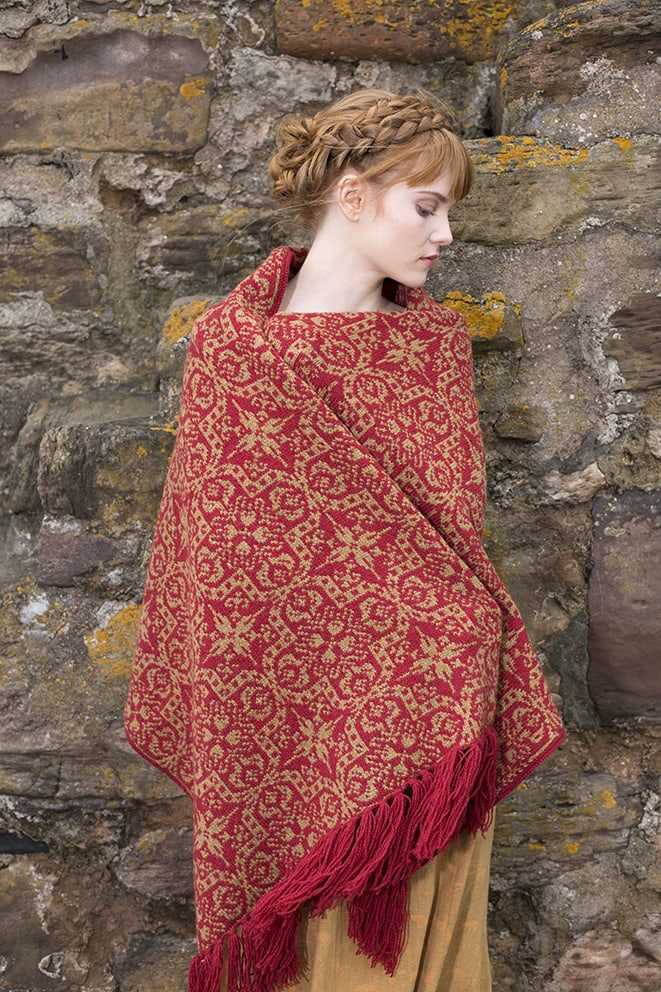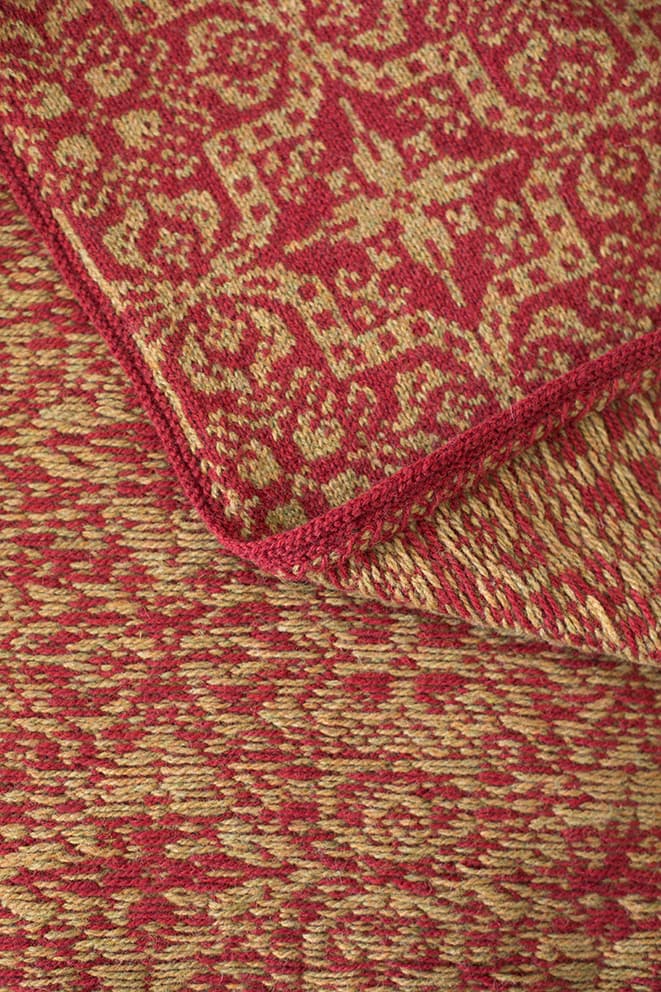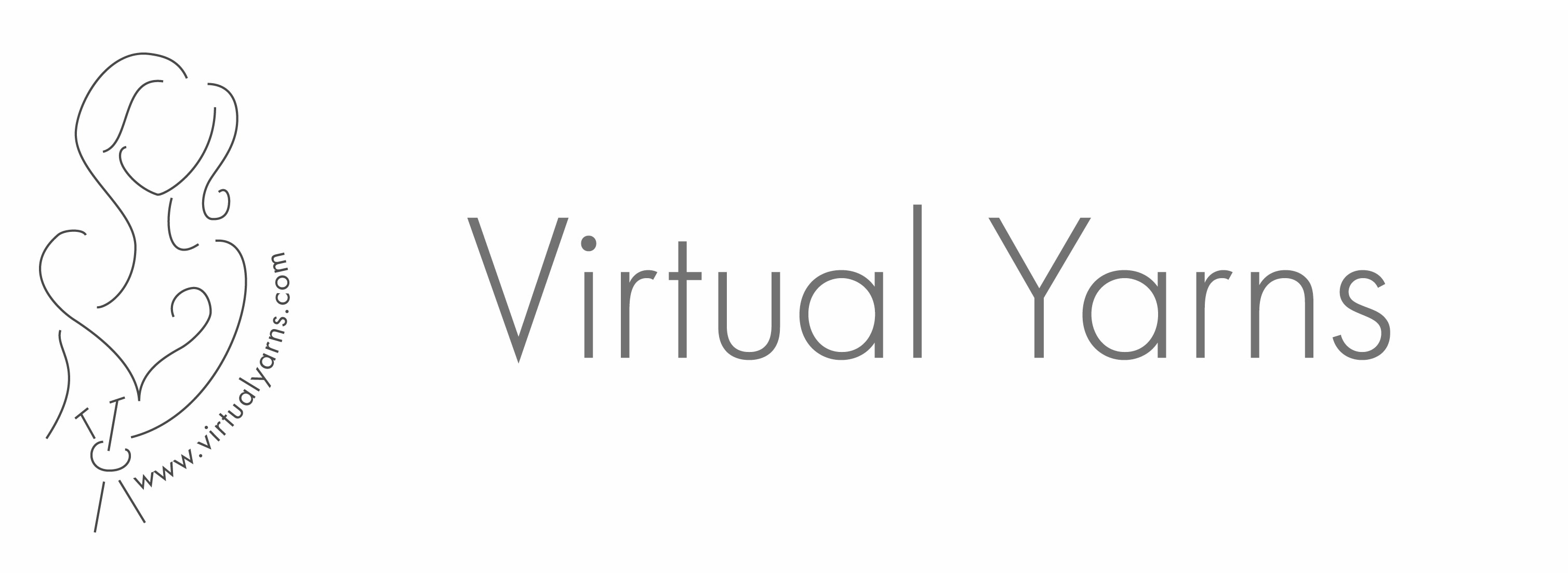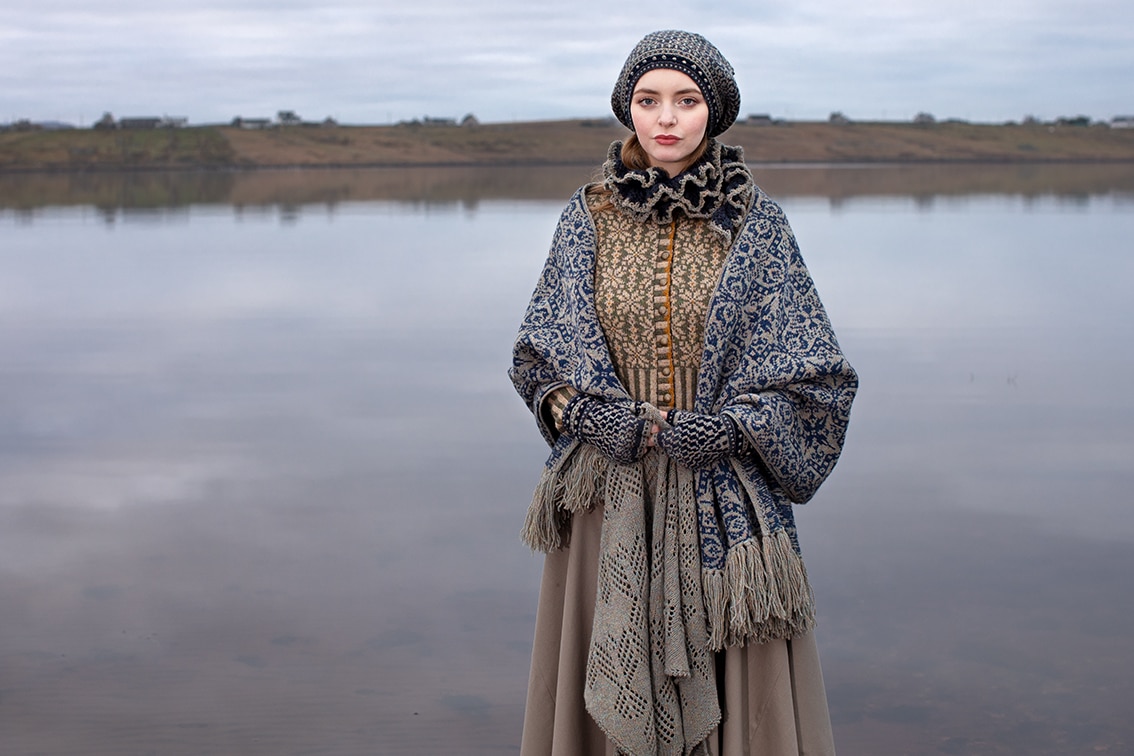
Persian Tiles
The Burrell Collection museum in Glasgow is a marvellous treasure trove of incredibly varied pieces which inspired my book A Collector's Item. Walking in can be quite overwhelming due to the different styles and colours pulling your attention in all different directions, and narrowing the objects down to a handful of inspiration pieces was not an easy task. However I found that the Persian tiles, though they were subtle in colour, were especially striking due to the use of large-scale, double-centred patterns, and it is that aesthetic that I wanted to achieve in this design.
The Persian Tiles Wrap was designed to be easily personalised. I used only two colours to highlight a complex floral pattern set within a squared star and a cross motif. It is so well-defined that adding a colour gradation would have detracted from the lines of the pattern itself, which is the focus of this design.
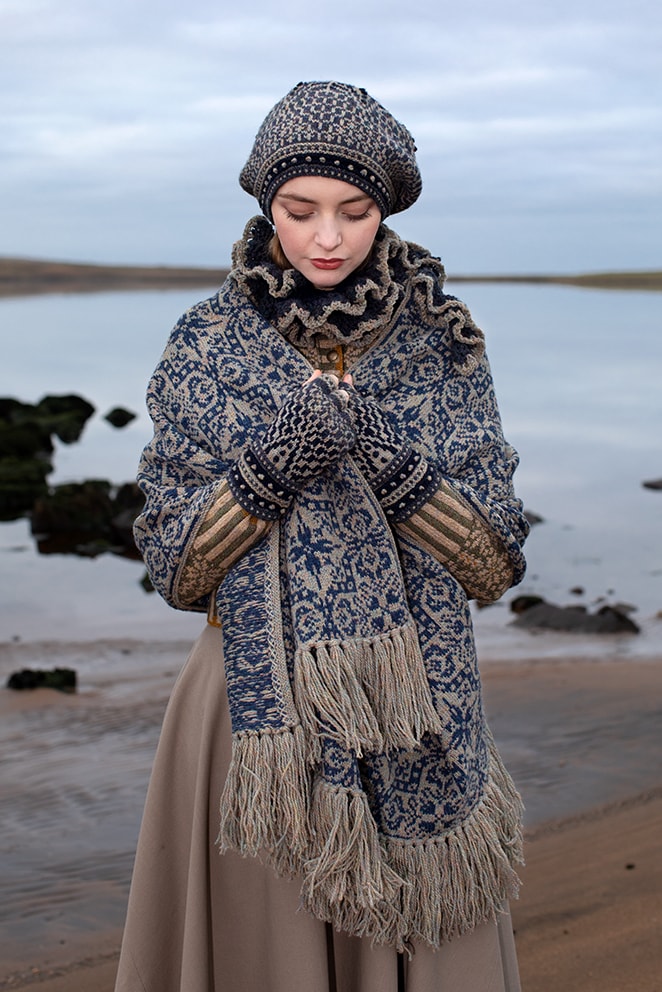
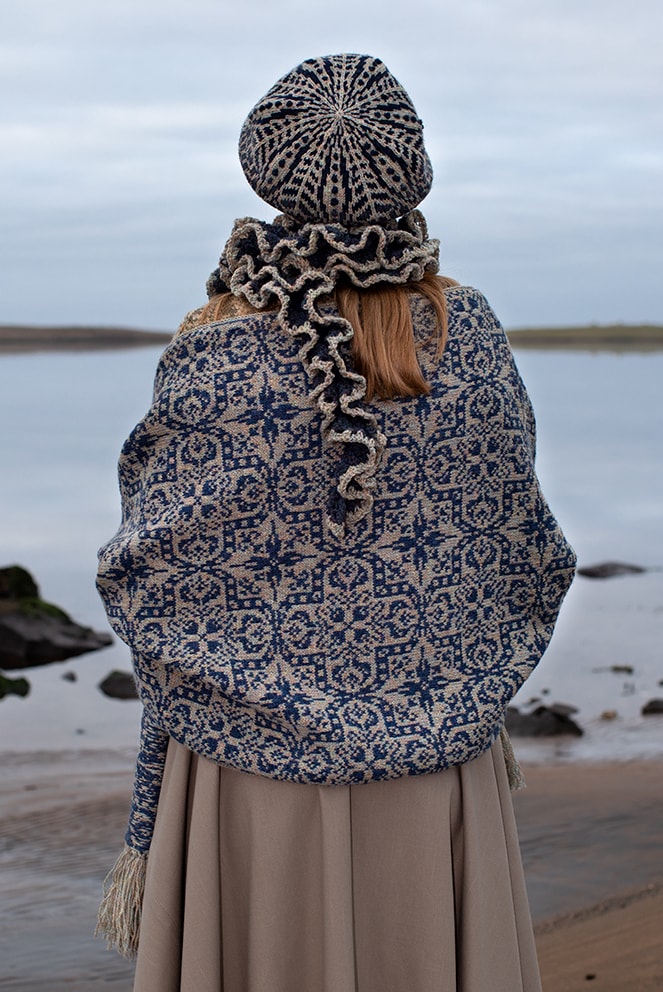
This piece spans a range of abilities. It is a great project for a more experienced knitter who wants something that can be carried about, picked up and put down easily. There is no need to worry about colour changes so it is pleasant to knit in company, or during an evening when your attention is divided. It is also easy to transport as you know you only need two balls of yarn to keep you going for quite some time. However, I also designed this wrap for people who have never tried a project with steeks before.
The most common response I get from non-knitters who see me knitting a stranded design is along the lines of “I could never do that, it’s so complicated. I wouldn’t know where to start.” Everyone who does stranded knitting knows perfectly well that it is not a difficult technique, though some designs can push the method in more complicated directions. The hardest part is actually having the confidence to begin a stranded project with steeks for the very first time. And that is partly why I designed Persian Tiles as a wrap, as it is the ideal project to try your first steek.
I was taught to knit stranded garments in the round by my mum (who as some of you may know does a very good job of explaining all things knitted!). The most important thing I learned from her is that stitch and row tension, and stranding evenly are the key issues. But the method used to achieve a good tension can differ from person to person and is entirely down to what you find most comfortable to produce the best result. So while Alice knits stranded designs to a perfect tension with a different colour of yarn in each hand using both left and right hands to create stitches, I knit with the yarn in my right hand, dropping and picking up the colours as I need them. I have knitted garments using the two-handed method, and while I can achieve an even tension I don’t find it relaxing or comfortable. I find the method I employ comfortable and easy and it produces the best result for me, so, as Alice has always said, whatever method works for the individual and produces the best result is the “right method”.
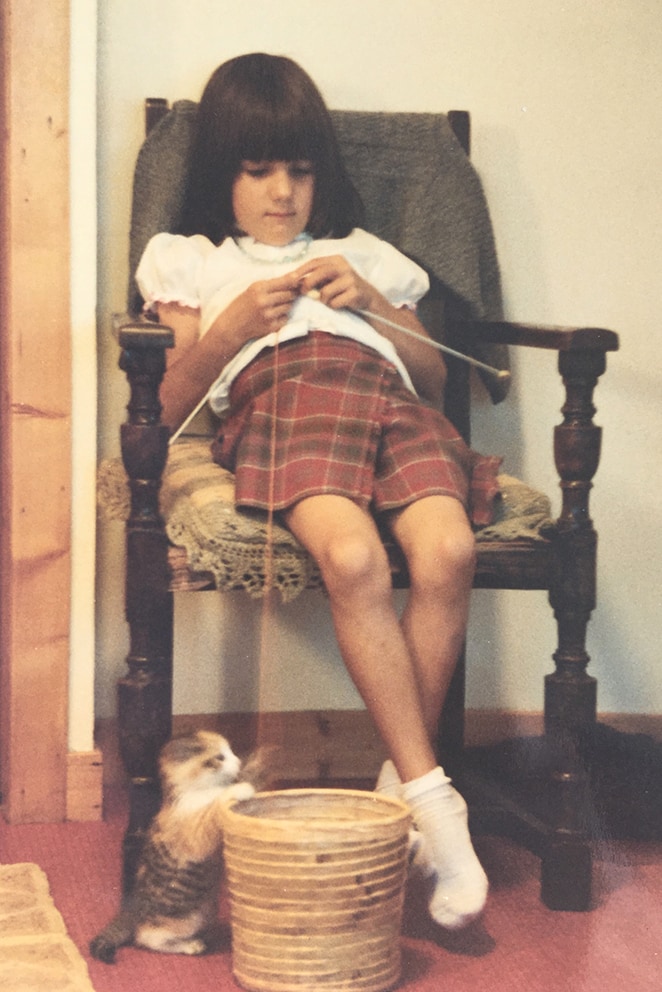
Jade aged 7, working on her knitting techniques, using a Helper Kitten to get her tension right.
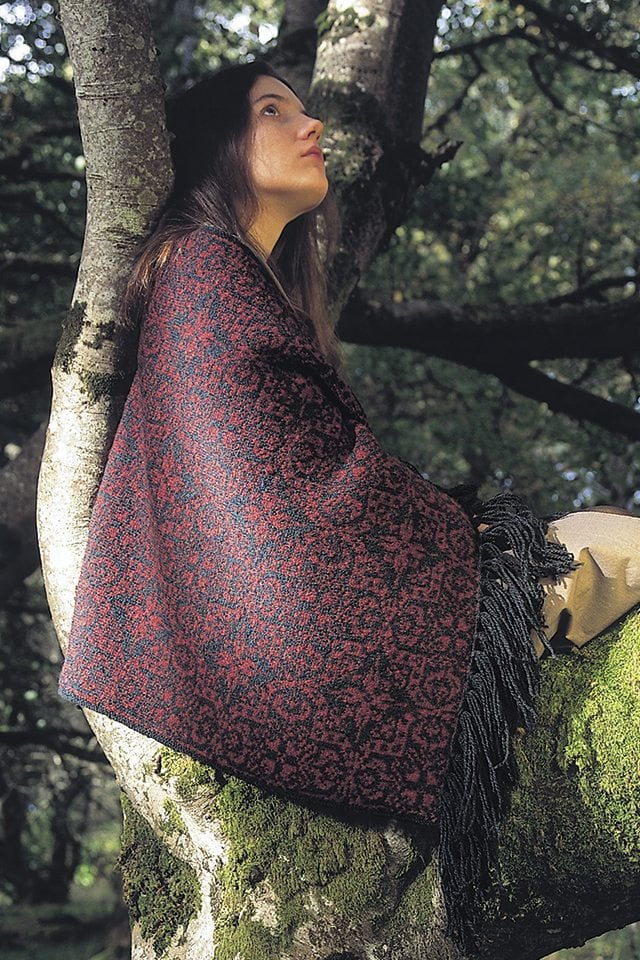
Jade wearing a Persian Tiles in Calluna and Red Deer.
Persian Tiles is a great first project because it has no shaping and no colour changes. The only consideration being following the chart and making sure your tension remains even. By the time you have finished your confidence should be very high and moving on to a project with shaping and colour changes will seem natural. The steek runs through the entire length of the garment, and so the steek stitches are cast on along with the pattern stitches. It is straightforward from then on, right to the end of the piece. Because there is no shaping, finishing the steek is also more straightforward and you do not have to curve around an opening such as an armhole while cross stitching. The detail shown here shows the stranding and finished steek and edging of a Persian Tiles Wrap in Sea Anemone & Corncrake.
On a couple of rounds there are longer stretches between colour changes in the pattern, so you do have to weave in the yarn once at the centre of the stretch. However, this skill is no more difficult than stranding itself, and can easily be practised in swatches. All in all, this design combines a gentle learning curve for a beginner, and an easy project for the more experienced knitter, but whatever your ability the end product is very beautiful in whatever colour choice you decide on.
